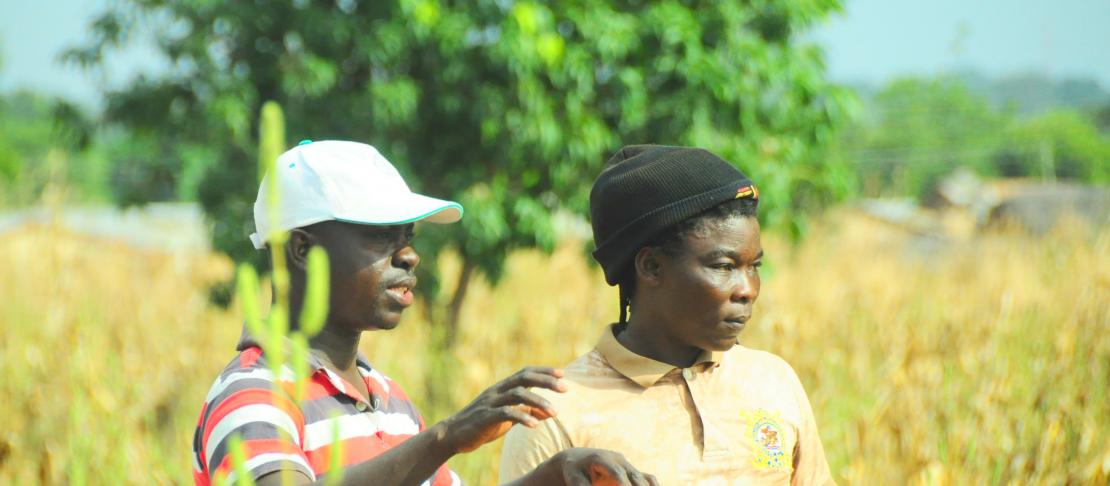How local knowledge and resource networks shape the adaptive capacity of smallholder farmers: insights from rural Ghana

Can close relations with local actors improve climate change adaptation?
William, a 40-year-old farmer from Orbili, a small village in Northern Ghana, is neither the largest landholder nor the most educated man in the village. But a few years ago, when the village experienced a serious pest infestation in their vegetable gardens that caused financial ruin, only William’s garden survived. On closer investigation, it transpired that most farmers in Orbili planted the same vegetables and employed similar practices that allowed pests to flourish and spread quickly from garden to garden, destroying crops in their wake. William, though, planted different vegetables and his garden survived the infestation and preserved his livelihood.
This crisis raised many pertinent questions about how households cope with environmental shocks and adapt to climatic challenges. Importantly, why did William plant different vegetables from his fellow farmers? Where did he learn of these different vegetables? And why didn’t the others do the same?
These very questions were at the heart of a study conducted by researchers from the Environmental Change Institute, University of Oxford (ECI Oxford) and the CGIAR Research Program on Climate Change, Agriculture and Food Security (CCAFS) in rural Northern Ghana. This part of Ghana is especially vulnerable to climate change, and is considered to have the lowest adaptive capacity in the country because of low socioeconomic development and a strong reliance on rain-fed agriculture. Most farmers there depend on manual labour, which severely limits production, yield, income and food security.
The team used social network analysis (SNA) to map and examine the relationships with outside actors of the 58 households in Orbili to better understand how they influence social structure and adaptive capacity in ways that would not otherwise be apparent from traditional community-based research. The study investigated households’ network positions and connectivity to their adaptive capacity.
The results of this study were recently published in the Journal of Rural Studies, Ties that bind: Local networks, communities and adaptive capacity in rural Ghana, and showed that better connected households have more diverse livelihoods. These central households are exposed to more information and knowledge and are thus in a much stronger position to translate opportunities into greater resilience.
Multiple external relations appear important for improving adaptive capacity by offering numerous opportunities for diversification. By contrast, having few relations, even if strong, increases vulnerability, which was observed during Orbili’s pest infestation where most community members had a single strong connection with a local NGO that promoted a monoculture. William, meanwhile, had several external ties (especially for knowledge) where others did not, including to the local livestock group and district agriculture department. This allowed him to diversify, take risks, innovate, and ultimately adapt to the environmental challenges.
The study also showed that external relations in Orbili are biased towards younger farmers, as centrality (or number of connections) of households drops with age. Support provided by some actors, such as NGO inputs for dry season farming, are seldom targeted towards the needs of older farmers, restricting their participation. This exacerbates stratification within the community and may lead to differential adaptive capacities between the young and old.
results suggest that close relations with local actors improve responses to environmental change
While the study shows that household capacity to adapt and network position is linked, we cannot be certain that connectivity inevitably leads to improved adaptive capacity or whether greater capacity allows households to be more connected. Nevertheless, results suggest that close relations with local actors improve responses to environmental change and can enhance adaptive capacity.
The network approach advanced in this work complements traditional institutional analyses by showing evolving relationships within the system. When combined, such multi-pronged analysis helps optimise precious resources (time is a resource) by ensuring that planning and implementing adaptation policies remain flexible, broad and resilient, rather than over reliance on particular institutions or actors.
As Darwin aptly asserted - it’s not the strongest or the most intelligent that survive but the ones most responsive to change. William’s case provides such valuable lessons for farmers and planners to look beyond personal attributes and assets towards external networks to build capacity to adapt to a changing climate.
Download the article: Chaudhury AS, Thornton TF, Helfgott A, Ventresca MJ, Sova C. 2017. Ties that bind: Local networks, communities and adaptive capacity in rural Ghana. Journal of Rural Studies 53:214-228.
Abrar Chaudhury is a Postdoctoral researcher at the Said Business School, University of Oxford.
Chase Sova is a Visiting Researcher at CIAT and a doctoral candidate at the Environmental Change Institute, University of Oxford.



